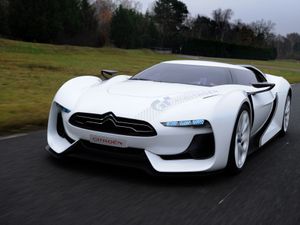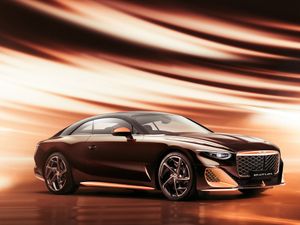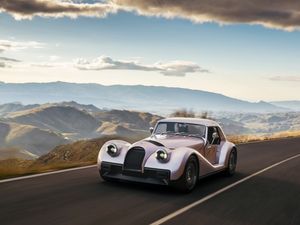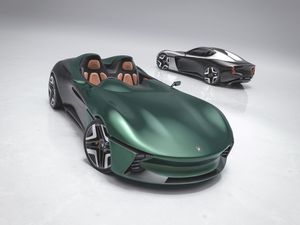The most controversial concepts ever created
Like with many cars, the manufacturers give us a hint of what the production variant will look like, and some spark more divided opinions than others.

The rebranding of one of Britain’s oldest and most loved car makers, Jaguar, has caused a stir of controversy.
The British brand revealed its first concept car that will set the trend of its new design language and product portfolio with the Type 00.
But this is just the tip of the iceberg as the firm charges onwards to create three production-ready EVs next year all with each carrying big price tags and targeting a new audience.
Concept cars give us a flavour of what to expect from car manufacturers over the coming years, with some making it into production. However, some have been very bold moves from the brands, yet some succeed and others don’t.
We take a look at some of the most controversial concept cars that have turned a plinth at a motor show.
Audi TT

The original TT concept was showcased at the 1995 Frankfurt Motor Show and it looked like nothing we’d seen before. Audi had grown a reputation for making solid and dependable saloon and estate cars, alongside some rather exciting rally-inspired cars with its Quattro all-wheel-drive system, but a two-door coupe that looked like something out of the next century was a complete breath of fresh air.
When the production car was ready in 1998, it sold like hotcakes and went on to become one of Britain’s favourite coupes. The TT spanned three generations and had sold more than 157,000 units in the UK alone by the time production ended in 2023.
BMW 7 Series

Back in the early 00s, one of BMW’s lead designers, Chris Bangle, was in charge of shaping the firm’s next luxury limousine, the 7 Series. However, looks are a subjective matter and when it was launched in 2001, the design was very different from the car it replaced.
The body style itself was curvy compared to the outgoing model’s squared stance, making it a bold move for BMW. Despite this, the E65 7 Series still went on to be a very competitive rival to the Audi A8 and Mercedes S-Class as it offered a sporty driving experience as well as offering tonnes of equipment and modern technology for the time.
Toyota Aygo Crazy

When the original Aygo came along in 2005, it offered back-to-basics motoring, with ultra-low running costs and cheap maintenance.
However, in 2008, Toyota went against that ethos and decided to create a one-off Aygo it called the ‘Crazy’. The car featured a mid-mounted engine layout, with its drivetrain pinched from an MR2 Roadster, alongside flared wheel arches and bucket seats, no rear seats and a roll cage. Aygo Crazy graphics and a very large body kit completed the set. Unfortunately, the Crazy never made it into production, but it certainly created a stir for Toyota to make fun performance cars that spun a decade later with the likes of the Yaris GRMN and GR Yaris.
Tesla CyberCab

This year, one of the most prominent creators of electric cars, Tesla, decided to reveal a self-driving taxi, called the CyberCab.
The CyberCab is an autonomous electric car that features no manual driver controls. This means that it doesn’t come with a steering wheel, pedals, or any sort of features that allow the driver to take control. Tesla has always done things differently, and the CyberCab is by far the most controversial yet.
The design is similar to other Tesla models and the interior does include the familiar landscape-orientated infotainment screen but, at present, the UK will not be receiving the Cybercab but it’s expected to arrive in the USA in 2026.
Fiat Multipla

One of the weirdest yet ingenious pieces of design came from Fiat in the late 1990s with its Multipla MPV. While a lot of cars in this sector of the time were bland and boring, Fiat decided that not only did it want its latest family wagon to look like nothing else, but would come with a six-seat configuration.
The Multipla’s odd design meant that its wide-body would allow for a lot more space inside for occupants. But, externally, the car looked very different on the road, while its very small headlights, large door mirrors and curved body made this big Fiat a very likeable and popular choice, despite its controversial looks.
Citroen GT Concept

Launched at the 2008 Paris Motor Show, the Citroen GT showed the world that not only was the French manufacturer good at reinventing the wheel, but it was also capable of making an exciting supercar.
The GT was used as a promotion tool for the upcoming Gran Turismo 5 Playstation game, and featured a very low and svelt body, alongside white wheels, scissor opening doors and wide air intakes.
It also included blue LED headlights, carbon rear-view mirrors and a wraparound windscreen to make it very aerodynamic.
Sadly, the GT Concept never made it to reality and was just used as an experiment to be included in the Gran Turismo Playstation series.
Renault Avantime

One of the biggest flops in the automotive world came from Renault back in 2002 with its Avantime.
The concept car originally debuted at the 1999 Geneva Motor Show and it would offer a two-door coupe-styled body, with the same exterior dimensions and interior space as an Espace MPV. The Avantime went into production in 2002, and came with some world-first features such as double-hinged front doors, to allow for easier access. But, its odd styling, thirsty engines and lack of rear doors meant that only 200 examples were sold in its first year on sale. The Avantime was then axed in 2003.





